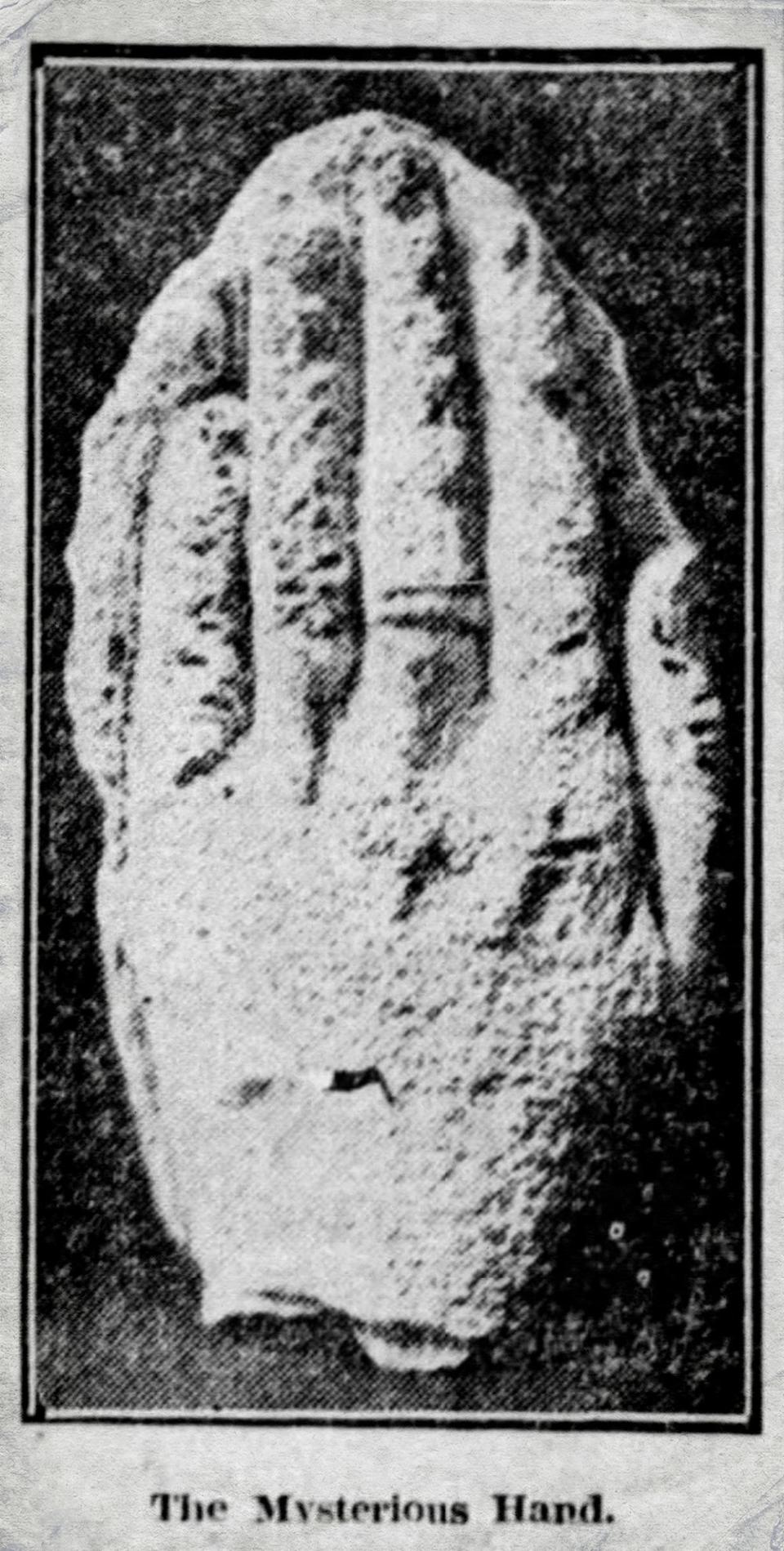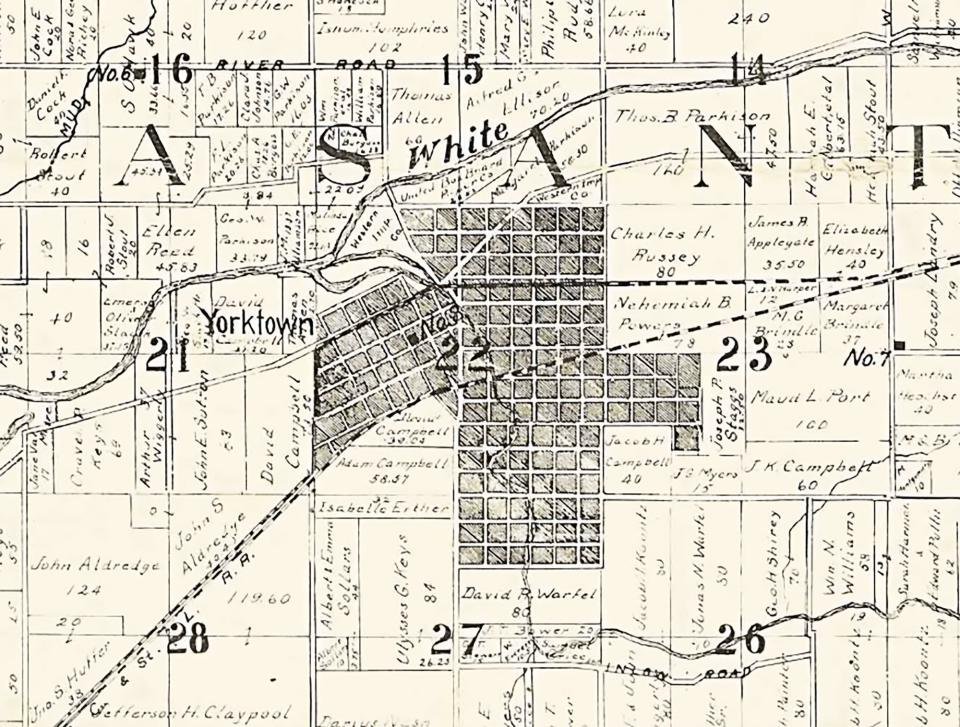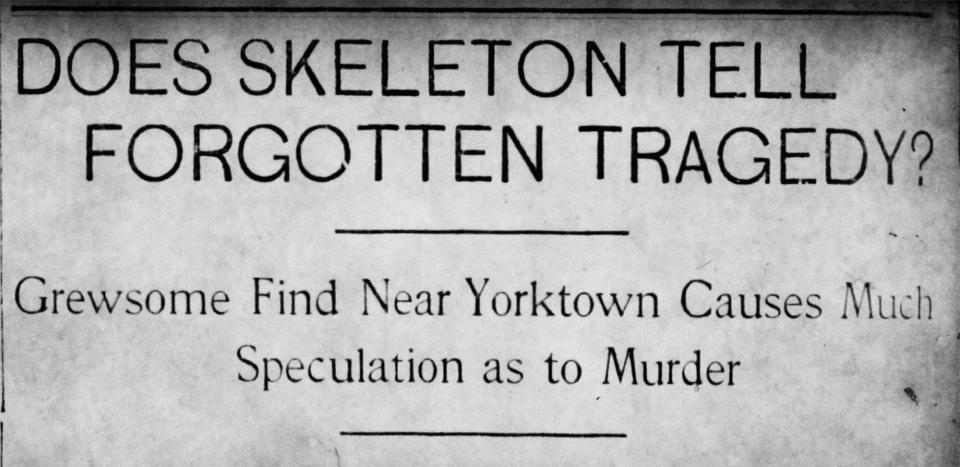ByGone Muncie strange April of 1904: Yorktown’s theories
MUNCIE, Ind. – April 1904 was a weird time in Yorktown. Late that month, a Mt. Pleasant Township farmer named John Sutton found a human skeleton about a half-mile west of town. The Muncie Morning Star reported that Sutton discovered the skeleton in one of his fields, “lying with its grinning skull turned upward and with fleshless limbs in an unnatural attitude.”

The old bones were about 100 hundred feet away from the White River, which ran through the north end of Sutton’s farm. The Star wrote that “the skull of the skeleton was crushed on the right side,” suggesting a violent death. The farmer tried to move the bones, but “they were brittle and crumpled when handled.” He opted instead to rebury them on the spot.
Yorktowners began trading theories about the skeleton’s origins. The Star wrote on April 26 that “the residents of the vicinity are excited over the many stories of mysterious murders that are going the rounds.” One story told “of a wealthy man from the east who passed through Yorktown during the gold excitement in the early fifties.” He went walking one day with another guy in the direction of Sutton’s farm, but never returned.
Another story had it that the skeleton belonged to a Mt. Pleasant Township farmer who went missing one day. The Muncie Evening Press wrote that this “man had been paying considerable attention to the wife of a neighbor.” It was rumored that the jealous husband “took occasion to waylay him.”

But most Yorktowners, according to Morning Star, believed that “the skeleton is that of a cattleman who passed through the district several years ago, and whose horse was afterward found without a rider.” At the time, a road ran parallel to the White River along the south bank, beginning at the end of Plum Street in Yorktown. The thoroughfare snaked along the river and crossed it just before the river bent south. The road continued straight until it terminated at County Road 750 West, south of York Prairie Creek. The Star wrote “that this was the road over which the cattleman, a stranger, departed from Yorktown.”
I looked but couldn’t find any historical reference to a ‘murdered cuckold farmer’ or a ‘missing Yorktown cattleman.’ However, that doesn’t mean the 1904 tales weren’t based in fact. Yorktowners were trying to rationalize the skeleton and were probably recalling unsolved Mt. Pleasant Township mysteries. It’s also likely the skeleton had an entirely different origin.
Regardless, folks at the time thought flood waters either eroded the dirt around a shallow grave revealing the bones, or washed them in from a different location. I should note that Sutton’s farm was near two pioneer graveyards, Stewart Homestead and Van Matre. Stewart Homestead Cemetery dates to before 1850 and lies immediately west of the Yorktown Wastewater Treatment Plant. Van Matre Cemetery opened sometime around 1880 and is located south of River Valley Road, east of South County Road 700 West.

Heavy rains in late March of 1904 had caused widespread flooding across Delaware County. The Star reported on March 27 that “the most disastrous flood which has swept Muncie within the past forty years was that of Friday night and Saturday morning.” Flood waters reached 3 feet above any previous flood stage and “the force with which the water swept Muncie was terrific.” The Star estimated that “the damage wrought by the flood will aggregate more than $50,000 loss in the city and county,” which is about $1.7 million today. Floodwaters also carried away Yorktown’s old iron bridge over Buck Creek and caused general bedlam for anyone living along a waterway.
As floodwaters receded early in April, a Yorktowner by the name of Bart Miley was out for a stroll and discovered what he believed to be a petrified hand, “which had been washed upon the sandy bank of the millpond.” The pond was located near what was an old mill race southeast of Yorktown between Buck Creek and New York Avenue.
Muncie Star reported that Yorktowners believed the hand belonged to a woman, “it is neatly shaped and on the fourth finger can still be seen the marks of a ring. On the back of the hand is still the unmistakable sign of a wart.” A local doctor named Jonathan Downing examined the hand and determined it was plaster of paris, but others “held it was a human hand, probably petrified.”
Miley’s discovery caused “considerable discussion in the little town among the older residents.” Old-timers recalled a story of a woman who died of suicide some years back. In 1904 when the Star published this story, they referred to this woman as a “gypsy maiden,” a pejorative label for a Romani person. Thousands of Romani had emigrated to the United States in the mid-19th century and traveled across the continent, including Indiana.
The legend Yorktowners recalled was that one day, many years ago, a hunter was out walking around the millpond and stumbled upon a Romani couple in a small encampment. He “overheard the two quarreling, and the next day when the villagers went to the camp, they noticed that the horse and covered wagon and the man were missing. The languid-eyed [Romani] maid was there alone, sitting outside the little tent, moodily looking into the millpond.” The next day, locals found a letter written in poor English that suggested suicide, “if you wish to find my body you will find it at the bottom of the pond.”
I have no idea if the hand found in early April 1904 belonged to this woman, but the backstory Yorktowners gave in 1904 is actually based in fact. Sixteen years prior, the Muncie Morning Star reported on October 15, 1888 that locals were agitated over “a case of suicide in that town two nights before.” Apparently, “a party of movers, two men and one woman, camped near the mill race and on Saturday morning the two men left, but the woman was not seen with them.” The next day, a boy found a bloody cloak and the suicide note. Yorktowners dredged the race and pond, but found nothing and suspected murder.
If petrified hands and unearthed skeletons weren’t enough for Yorktown in April 1904, a ghost began haunting a barn late that month, appearing nightly at 9:00pm sharp. One night, the Evening Press reported that “a large number of young men gathered near the place where the ghost is supposed to walk, hiding behind a wagon.” As they waited, one of the guys quietly left and “secured a pair of white duck trousers, white sweater and a false face.” He covered himself in rags and ran out from the barn moaning loudly as the clock struck nine.
His friends weren’t frightened nor amused, “instead they began to bombard the ghost with stones.” The “amateur ghost made a hasty retreat” to the White River. Such is how April 1904 ended for the town of Yorktown, Indiana.
Chris Flook is a Delaware County Historical Society board member and a Senior Lecturer of Media at Ball State University.
This article originally appeared on Lafayette Journal & Courier: ByGone Muncie strange April of 1904: Yorktown’s theories

